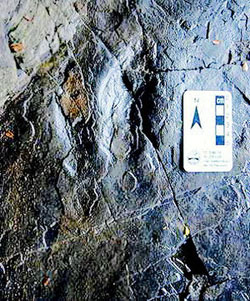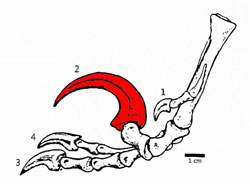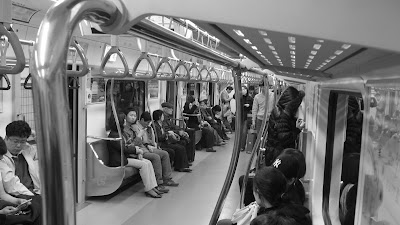 From December 14th to February 10th of this year, the Russian Natural History Museum held its "Paleontological Treasures from Russia Exhibition" in Seoul. I was lucky enough to attend this amazing exhibition of many rare and valuable fossils from Russia - including Tarbosaurus, Permian therapsids, and Dima, the exceptionally well-preserved baby mammoth.
From December 14th to February 10th of this year, the Russian Natural History Museum held its "Paleontological Treasures from Russia Exhibition" in Seoul. I was lucky enough to attend this amazing exhibition of many rare and valuable fossils from Russia - including Tarbosaurus, Permian therapsids, and Dima, the exceptionally well-preserved baby mammoth.This was the largest overseas exhibition of Russian natural history in 70 years, with a combined material weight of over 10,000 tons. Unfortunately, photography was not permitted in the exhibit, but I managed to get a few shots off before seven Korean "attendants" swarmed me! The highlights represented in this post are only a fraction of the entire show. (The last time I was asked to stop taking pictures was in le Musee National d'Histoire Naturelle en Paris! Zut Alors!)
HIGHLIGHTS:
Tarbosaurus bataar -
 The Asian relative of Tyrannosaurus rex, Tarbosaurus lived 70-65 million years ago in Mongolia and China. It is so similar to it's North American cousin that some scientists believe it is the same genus! This cast was beautiful and a highlight (as I had never seen a Tarbosaurus before), but was mounted in an (incorrect) semi-erect pose with its tail dragging on the ground. It was an amazing introduction to the Russian Exhibition.
The Asian relative of Tyrannosaurus rex, Tarbosaurus lived 70-65 million years ago in Mongolia and China. It is so similar to it's North American cousin that some scientists believe it is the same genus! This cast was beautiful and a highlight (as I had never seen a Tarbosaurus before), but was mounted in an (incorrect) semi-erect pose with its tail dragging on the ground. It was an amazing introduction to the Russian Exhibition.
Intro to Palaeontology -
After the basic 'Origin of Life on Earth' exhibit, the Russian Exhibition showcased many great fossils of Russian plants, invertebrates, fish, and amphibians.
PERMIAN THERAPSIDS
Scutosaurus - A plant-eating therapsid (mammal-like reptile closely related to us) with armour on it's head and back. Scutosaurus lived 250-248 million years ago in Russia, before dinosaurs evolved.
Gorgonopsid - A carnivorous theraspid that lived contemporaneously with Scutosaurus in Russia, Gorgonopsids had well-developed 12-inch long incisors. It is not sure if they were covered with scales, skin or fur.
Estemmenosuchus - An omnivorous Therapsid who lived in the Permian in Russia as well, Estemmenosuchus had a surprisingly unusual face with multiple horns projecting outwards.
Woolly Mammoths -

Dima, the Baby Mammoth -
 The most notable artifact in the Russian Exhibition was the exceptionally well-preserved body of a baby mammoth, named Dima. From what I could tell, this was not a cast, but the actual specimen with its trunk and skin intact. There was even a small amount of actual hair around the back feet. Besides being slightly squished, the mammoth's last meal of chewed grass was still preserved, 40,000 years later!
The most notable artifact in the Russian Exhibition was the exceptionally well-preserved body of a baby mammoth, named Dima. From what I could tell, this was not a cast, but the actual specimen with its trunk and skin intact. There was even a small amount of actual hair around the back feet. Besides being slightly squished, the mammoth's last meal of chewed grass was still preserved, 40,000 years later!As well as the mentioned highlights, the exhibit also contained another juvenile Tarbosaurus, an ornithomimid, an Asian duck-bill, and a Deinonychus climbing a tree!
There was also a hilarious children's play area...
There was also a hilarious children's play area...
CHILDREN'S PLAY AREA -
































.jpg)








































































